Bernardo Kastrup will still be Bernardo Kastrup when he merges with Cosmic Consciousness in the Afterlife.
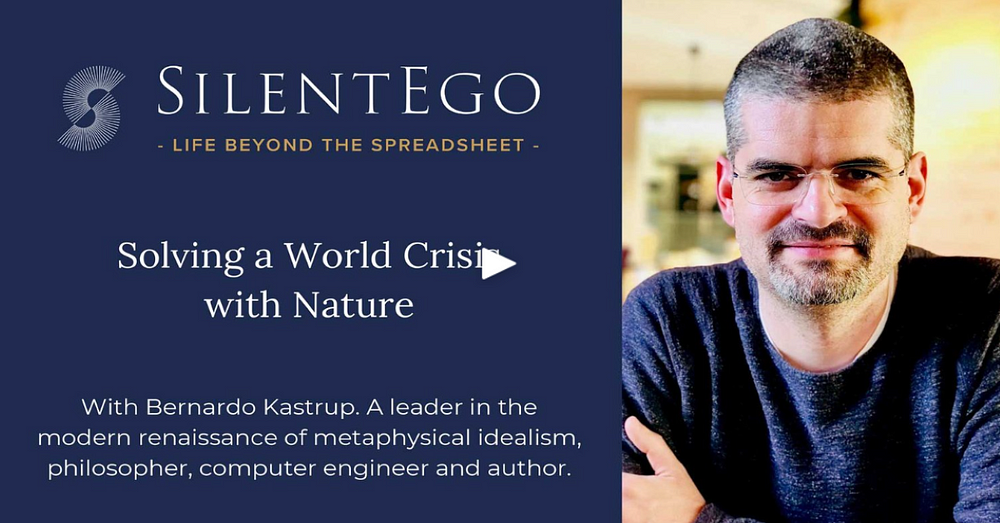
The philosopher Bernardo Kastrup believes that it is his “ego” and body which will die, not his consciousness or his “soul”.
Take this passage from Kastrup:
“It is reasonable to assume that the mental process we call physical death ‘makes the unconscious more conscious,’ because it eliminates a source of obfuscation; namely, the egoic loop.”
Kastrup continues:
“The sense of novelty here is merely the illusion of an ego going through dissolution. Once the ego is gone and all is remembered, the sense of novelty will disappear. [] As such, maybe life and death are entirely analogous to dreaming and waking up, respectively.”
So it’s clearly important to note how important what Kastrup calls the “unconscious” is to his Cosmic Idealism; and, more relevantly, to his positions on the afterlife. (Kastrup is much indebted to Carl Jung — see here.) Thus when Kastrup refers to “consciousness”, he’s often actually referring to the (Jungian) unconscious. And that clearly complicates matters.
As it is, in this essay I have no desire to tackle Carl Jung’s psychiatry/psychoanalysis or Kastrup’s 21st-century interpretation of it.
But, firstly, what if there is an afterlife?
Six Impossible Things Before Breakfast

When it comes to discussions of the afterlife (specifically as it’s supposedly encountered during near-death experiences), one often hears (or reads) the following words (or variations thereon):
“There is more out there than we know.”
The problem here is that people can claim literally anything and then justify their claim by stating: “There is more out there than we know.” So I could claim, for example, that there are green goblins, cats floating around Venus or aliens living in the earth’s core. And then, if someone criticises my claim, I can simply reply: “There is more out there than we know.”
All this may make the people who state “there is more out there than we know” seem open-minded. That’s primarily because such people appear to considering (as it were) “six impossible things before each breakfast”… Except that, more often than not, many of the people who state “there is more out there than we know” aren’t really open-minded at all. That’s primarily because they often artfully select precisely which possibilities to consider. And their very-well-chosen possibilities just happen to be perfectly in tune with their prior “spiritual” beliefs. Thus the possibility of, for example, zombies or mile-high tricycles (to take two possibilities from David Chalmers) are never considered by such people precisely because they don’t serve any spiritual (or personal) purpose.
But what about these six possibilities before each breakfast?
Those who cite possibilities need to supply evidence and arguments for taking each possibility seriously. So considering a possibility is fine — but not when simply stated without much (or even any) detail…
… But there still could be an afterlife.
And there is, indeed, more than we know.
Yet there’s still no reason to believe that the afterlife and many other possibilities are actually real or that the claims about them are true. In other words, there’s often no reason to take them seriously.
In any case, there are literally infinite other possibilities we could — or even should — also consider. But we can’t because we haven’t got the time. And, in most cases, there is no reason why we should anyway.
Ironically, many people do actually believe that they know (if only in a non-strict, non-epistemological sense) about the afterlife. Indeed that’s why they frequently talk about it. In other words, such people do not believe that the afterlife is beyond what we can know.
Of course some people also claim to be (as already stated) “open-minded” about the afterlife. Yet when you read just a couple of their comments, you quickly realise that they do believe in the afterlife. Indeed they seem to believe that they know it exists.
So all this has very little to do with being open-minded.
In any case, it is true that there are obviously many things that we don’t know. And?
Now, if someone says “your consciousness survives” in the afterlife, then what is it that survives?
What Survives Death?
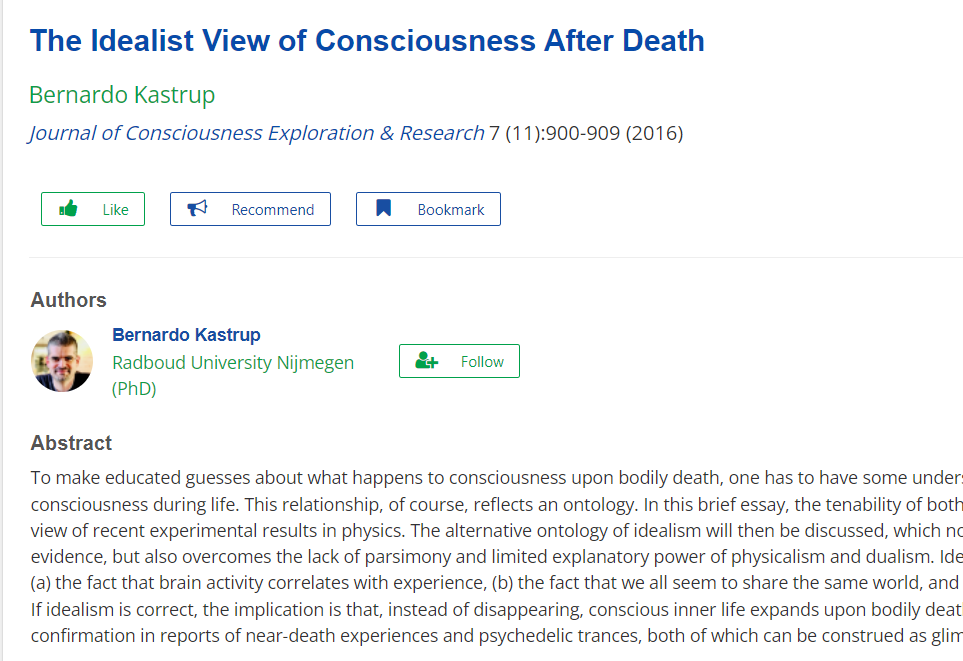
What do the words “our consciousness continues after death” mean?
What is it, exactly, that survives death and how does it do so?
To Bernardo Kastrup, individual consciousnesses are part of Cosmic Consciousness. Yet even if this were true, then surely once we die there is still no “we” (or human persons) left to “survive”.
It is indeed the case that the particles which the physical and biological brains (of dead people) were made up of will (as it were) “survive” — but not individual minds or persons themselves. This is the frequent mistake of conflating the particles, fields and forces which constitute brains with minds — and indeed human persons — themselves surviving. How on earth could persons or minds survive? Such things are embodied in particular brains, bodies and environments. Without those brains, bodies and physical environments, what is this “we” that survives? How can there be persons (or “we”) without memories (see later section), cognitive functions, beliefs, etc. — all of which required physical brains?
So are these claims about the afterlife purely poetic? Are they designed to appeal to the emotions and also appease the intense and omnipresent fear of death which so many people experience? Or are these claims simply religious and therefore based on faith? Perhaps all of these things?
So most — perhaps all — these references to the afterlife (or persons/selves continuing to ? once their bodies and brains die) don’t really explain what exactly it is that survives. At least that’s the case in 9 out of 10 examples of talk of the “afterlife”.
Again, what is this consciousness which survives and why is it a person’s consciousness rather than some abstract or vague input into a “space-time storage bank” (or into Cosmic Consciousness)? How is some individual human person (who had a physical body and brain) still in the universe when he or she has no body and brain? What is left after death? And why is what is left — if anything — still deemed to be “your consciousness” or a human person? Moreover, why is what “survives” death deemed to be exactly the same person (psychologically speaking) than the person who existed when embedded in a particular brain and who had a particular body? What provides this continuity between the person with a body/brain and this “consciousness” in the Cosmos?
More to the point, why are these details very rarely — i.e., virtually never — mentioned by the believers in an afterlife or in Cosmic Consciousness?
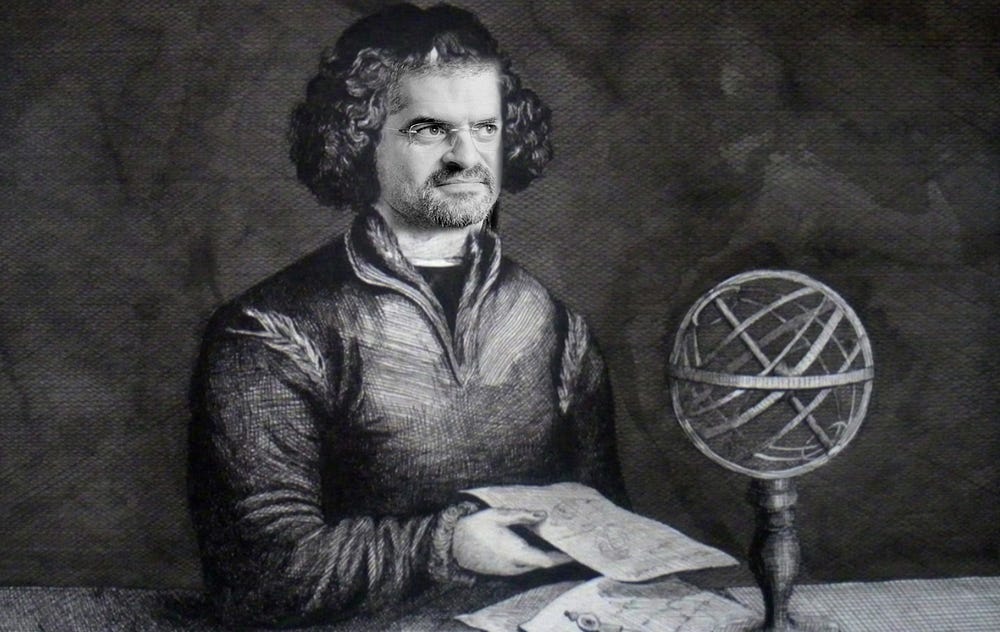
Now let’s take Kastrup’s own afterlife.
Will Bernardo Kastrup’s consciousness (as it’s put by many Cosmic Idealists) “expand” when he dies?
How will it expand and how will it still remain Kastrup’s consciousness?
If not embodied in a brain, body and in particular physical environments, then how does the non-embodied Kastrup distinguish himself from the rest of the Cosmos (or from Cosmic Consciousness)? In other words, if Kastrup simply “merges with the universe”, then why talk about Kastrup’s — or anyone else’s — “afterlife” at all? Surely merging with the Cosmos is the end of Kastrup and everyone else who dies.
So, in basic terms, all that must happen (at least according to the logic of this theological or spiritual story) is some kind of super-fusion of Kastrup’s mind and billions of other minds into the single melting pot that is both the Cosmos and Cosmic Consciousness.
Now take the very specific case of human memory.
Human Memory
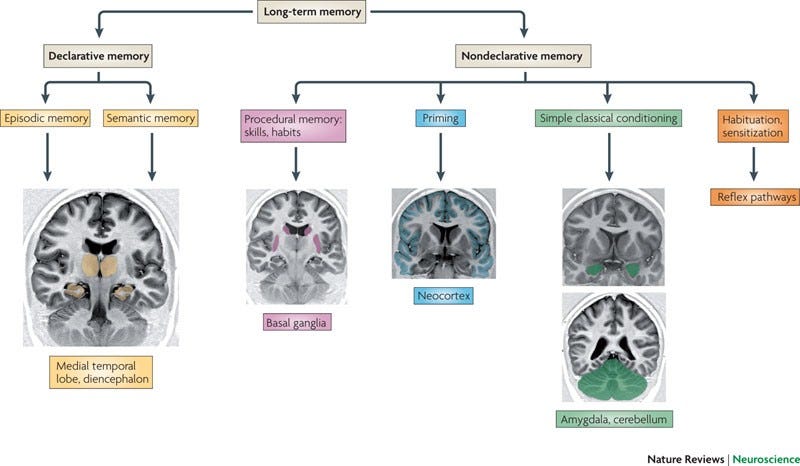
Human memories are literally encoded in the brain (see here and here).
There’s a vast amount of evidence of this and most/all neuroscientists agree. Of course this isn’t an argument that all memories, of all kinds, need to be encoded in human brains. It’s an argument that human memories are encoded in human brains. That is, whenever there has been a human memory since the beginning of our species, that memory has been encoded in brains — tens of billions of times.
And now Cosmic Idealists come along and say otherwise.
So it can be — provisionally — accepted that there may be computer memories or alien memories or even paramecium memories. That said, all these other examples bring up the issue of the precise implementation of these other memories in — some kind of — physical medium. And this is an issue which Cosmic Idealists either bypass or ignore by vaguely talking about “consciousness”. However, sometimes idealists may add a tiny bit more detail when they say that “consciousness is fundamental” (see my next essay).
That’s the issue of memory alone and its (as it were) wetware (see here, here and here).
Now what about the implementation of entire selves or persons?
Memory is also vital for a person to be a person. Thus how is memory encoded when the “mind” leaves the body and “becomes one with the universe”? How is that personhood (or selfhood) established? Is it simply another of the Cosmic Idealists’ fundamental (as it were) facts?
Quantum Foam as a “Soul Vehicle”
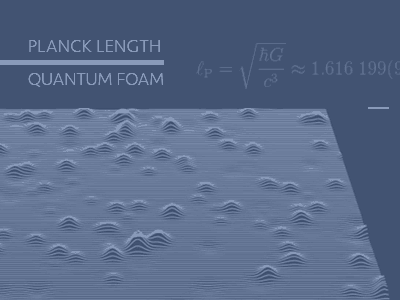
It’s worth noting here that some Cosmic Idealists don’t believe that consciousness is fundamental in precisely the same way as Kastrup and others do. Instead, they believe that consciousness is a (as it were) secondary fundamental in that it requires a medium which is even more fundamental.
Take these words from James Vaughn:
“[T]he ‘soul vehicle’ is Quantum Foam -which I think represents a fair concept of consciousness being a living yet somehow unquantifiable structure beneath all reality.”
The position — and the others like it — that quantum foam (or spacetime foam) is a “soul vehicle” and therefore fundamental is no better (or no worse) than believing consciousness itself is fundamental.
As with Kastrup’s Cosmic Consciousness, if any given x is truly an “unquantifiable structure”, then how can it be known that it is “beneath all reality”, “a fair concept of consciousness”, “living”, etc? This suggests that a lot is actually known about quantum-foam-as-a-soul-vehicle — and that’s apart from it actually being a soul vehicle!
In any case, how does quantum foam (even if a correct theory in physics) help when it comes to consciousness, the afterlife, etc?
One important point about quantum foam (as well as fields) is that it is taken to be fundamental. (In this case, perhaps the fundamentality of spacetime has been replaced by the fundamentality of quantum foam.) So how does something so basic, so simple, and so fundamental as quantum foam (or spacetime or fields) have any relation whatsoever to human selves or persons surviving in an afterlife as “pure consciousness”? This means that the precise relation between quantum foam (or, for that matter, Cosmic Consciousness) and human persons (or selves) must be explained.
Human persons (or selves) are a product of brains and bodies which exist in particular (physical) environments and have had particular (physical) histories. The creation of what we are (as persons) and what we believe (as persons) occurred because of our brains.
So how does all that connect to quantum foam?
What is the precise tie between something complex and firmly outside of fundamental physics (i.e., human persons and their nature) and something else (i.e., quantum foam) which is firmly within fundamental physics? How can quantum foam (as it were) implement the minds (or consciousnesses) of human persons once they are free of their bodies, brains and physical environments? What are the technical details of this supposed implementation of human persons in quantum foam?
What’s required here is not the detailed physics of quantum foam: what is required is the detailed physics of the precise tie between quantum foam and human persons (as the latter supposedly exist in the afterlife).
Cosmic Idealists: Egos and Spiritual Narcissism

“Ego is able to convert anything to its own use, even spirituality.”
— Chögyam Trungpa (source here)
Here we have a problem with the “spiritual” element of Cosmic Idealism, at least as it relates to the afterlife.
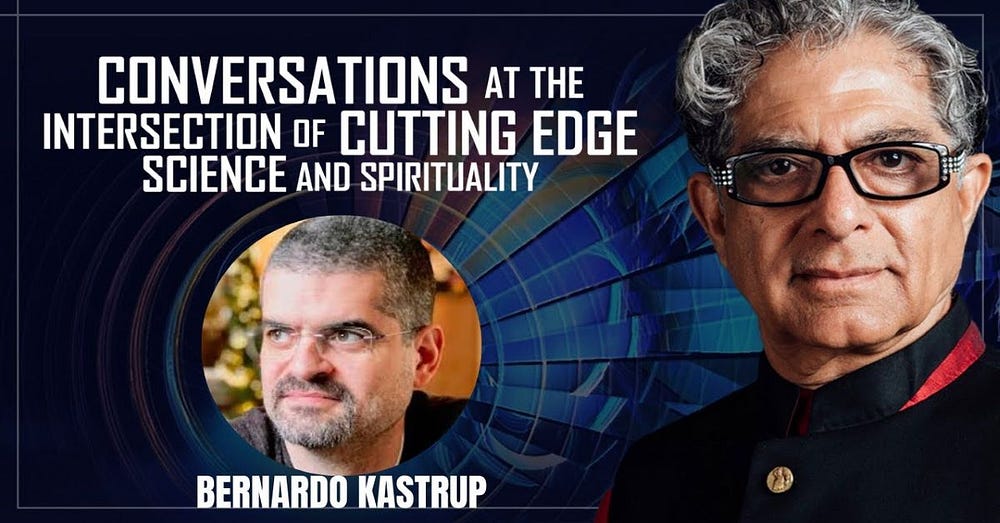
On the one hand, the “spiritual” benefits of merging with Cosmic Consciousness are often stressed. On the other hand, it is always very clear that it is individual human persons or selves (such as Kastrup himself) who do the merging. Thus these disembodied persons merge with Cosmic Consciousness at the very same time as keeping their entire identities — along with the memories which aren’t encoded in brains — which just (as it it were) float around in spacetime or the Cosmos. (See note (1).)
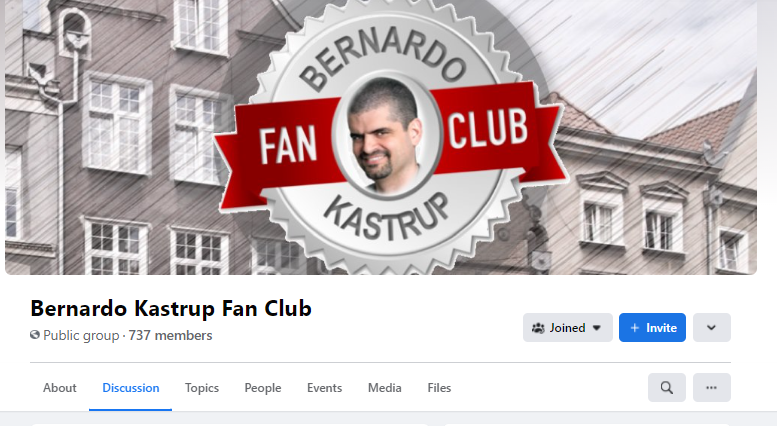
To be rhetorical, it is actually the individual egos (such as Kastrup’s own) of Cosmic Idealists that are kept firmly and completely intact when this so-called “oneness with the Cosmos” occurs or is brought about. Thus we have all the grandstanding rhetoric of the Cosmic Idealist being at-one-with-the- Cosmos. Yet in the process most of the Cosmic Idealists you read or listen to (Bernardo Kastrup and Deepak Chopra simply being the most obvious examples) see themselves as becoming superior intellects and more moral persons through such a merging. Thus, after achieving Oneness-With-the-Cosmos, such Cosmic-Idealist egos remain fully intact and, in most cases, actually become more “egotistical” than many non-idealists — and even materialists. Indeed these enlargements of the egos of Cosmic Idealists is a direct consequence of their supposed merging with Cosmic Consciousness. Such things are also, bizarrely enough, a consequence of the (to use Kastrup’s words) “ego dissolution” (or ego death) of Cosmic Idealists! (See note (2).)
So take these words from one of Kastrup’s fellow Cosmic Idealists:
“Some people are stuck only in the body-mind system as they’re are polarized in this way, since they are materialists.”
This is simply an example of spiritual and intellectual grandstanding in the guise of what’s often called “spiritual philosophy”.
****************************
Notes:



(1) Bernardo Kastrup’s very personal and strong words on just about every person and position he doesn’t fully endorse clearly display his huge ego. Take his highly personalised and very-smug criticisms of Philip Goff (see here and here), Sabine Hossenfelder (see here and here), Sam Harris (see here and here), Massimo Pigliucci (see here and here), all “materialists” (see here and here), “our culture” (see here and here), etc. etc. etc.
(2)
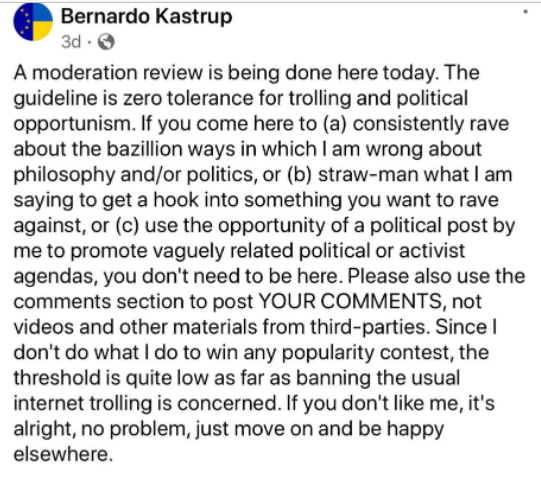
See ‘The Science of Spiritual Narcissism’, at Scientific American. See also a psychologist on “spiritual narcissism” here. Finally, this piece is on the direct link between being supposedly “egoless” and having a huge… well, ego — something that the writer admits to and thinks is a good thing.
(3) See my essays ‘Bernardo Kastrup’s Spiritual Take on Psychedelic Experiences and Cosmic Consciousness’ and ‘The Idealist Philosopher Bernardo Kastrup vs. Materialism’.
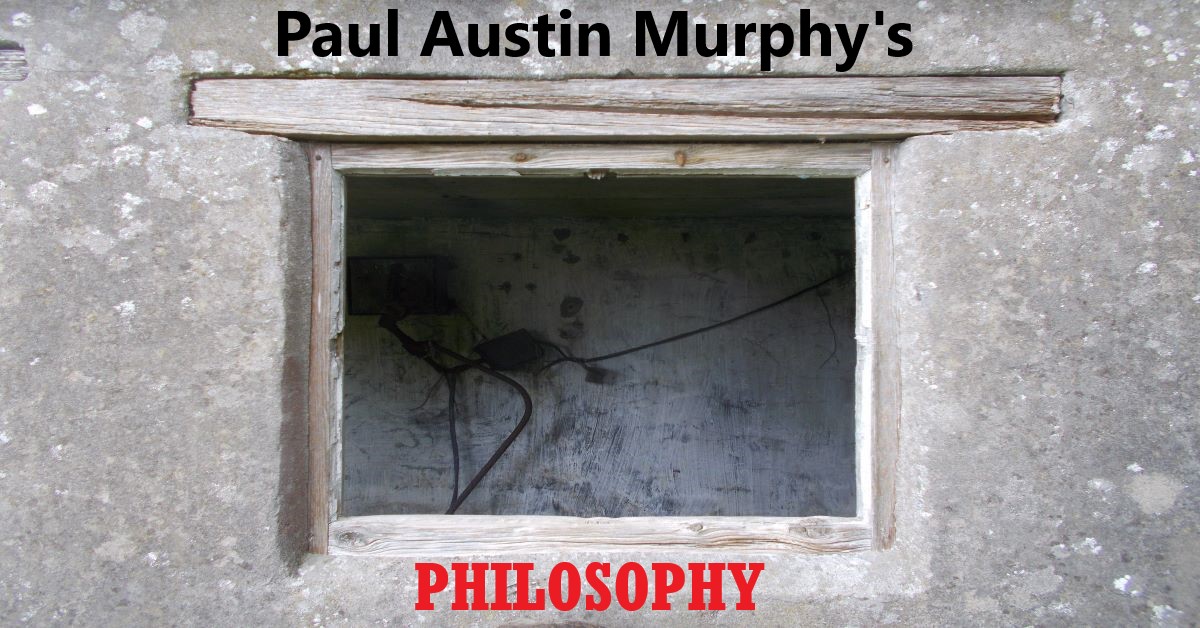









No comments:
Post a Comment